#euthecodon
Text

Another sketch brought to you by #paleostream
Euthecodon, a giant relative of the dwarf crocodile, catching a flamingo mid air.
1K notes
·
View notes
Text
HAPPY WORLD CROC DAY
It's June 17th, world crocodile day, a day to appreciate these amazing yet endangered animals. They are my personal favourite group of animals period and just endlessly fascinating to me, both those we have today and those that lived in the ancient past. Tho I'm no professional by any means, I strive to learn about them and spread this knowledge. So here's some photos, art and skeletals of fossil crocs (using the term rather liberally I know).
Feel free to drop your favourites in the reblogs, doesn't matter if extinct or not.

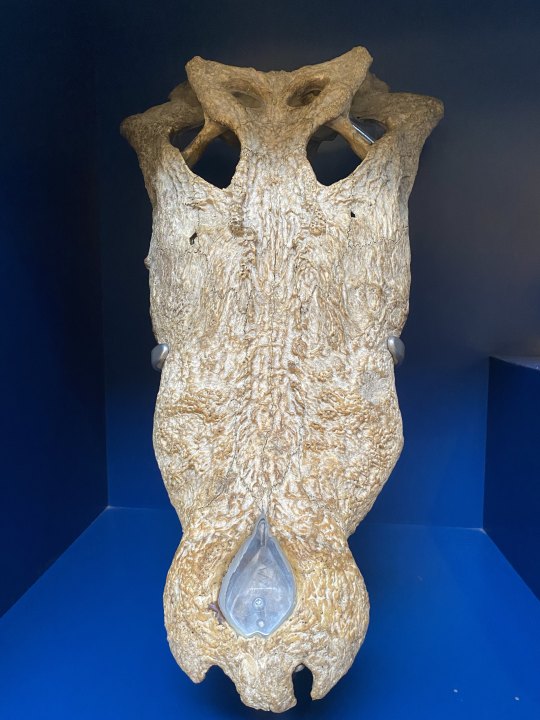
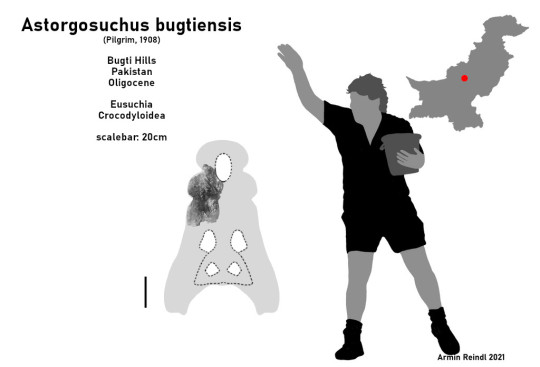
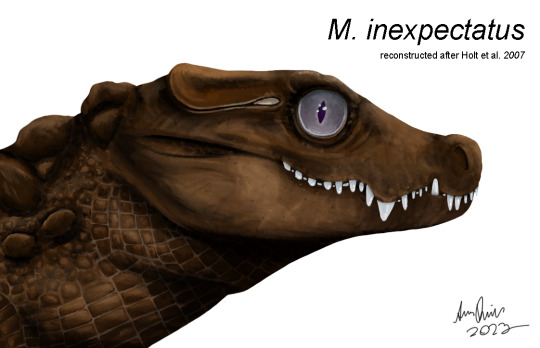

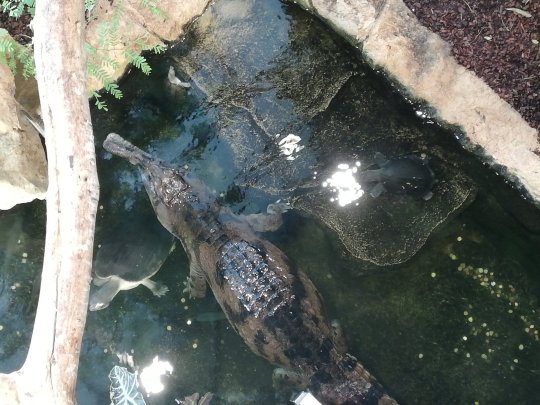




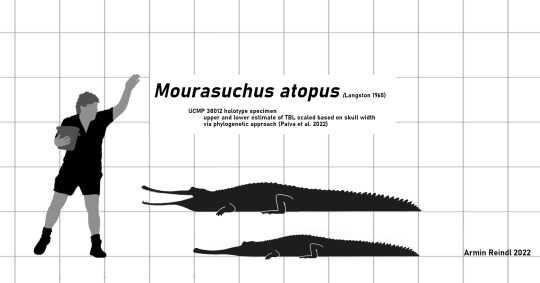
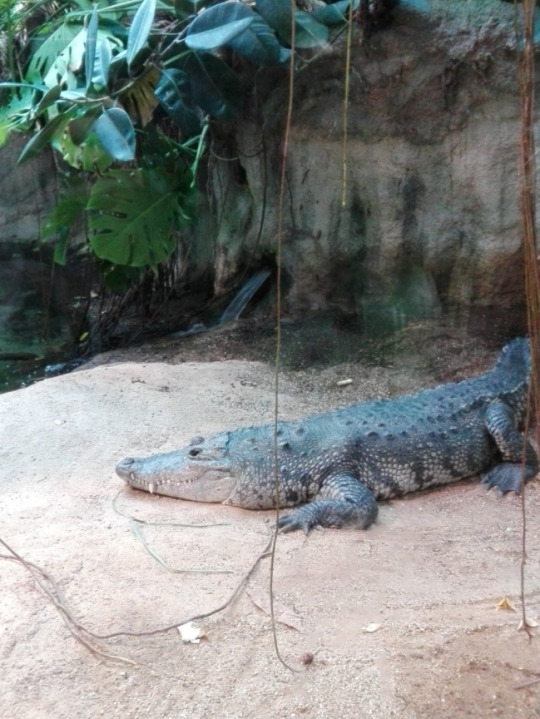
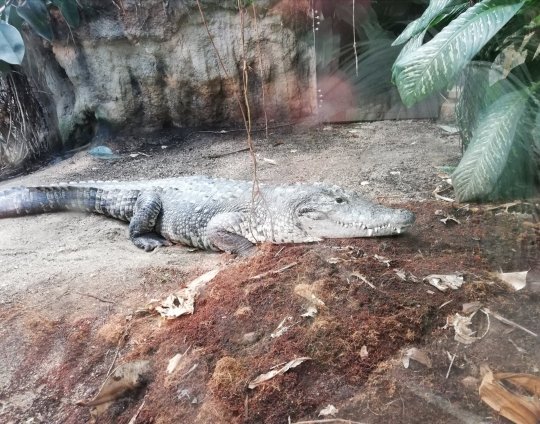
#world crocodile day#crocodile#caiman#gharial#alligator#croc#palaeblr#crocodilian#pseudosuchia#mekosuchus#astorgosuchus#morelets crocodile#dwarf crocodile#tomistoma#mourasuchus#euthecodon
246 notes
·
View notes
Text
Happy Fossil Day!

National Fossil Day is an annual celebration held to highlight the scientific and educational value of paleontology and the importance of preserving fossils for future generations. - National Park Services
As we are a server who bases our lore very heavily on fossils, from the prehistoric environment down to our characters, the saber-toothed cats, we thought we’d hop in and celebrate this day with some fun facts about fossil animals you could possibly encounter here in the Baobab!
Deinotherium
The heavy-weight representative of TuskClan’s megafauna is colloquially known as simply “The Elephant”, though you may be quick to spot that these are no modern-day African Elephants. Instead, the proboscideans that you’d encounter out on the savanna are based on the famous extinct genus of DeinotheriumI, a close relative of modern elephants. They are known for their distinct tusk-shape, curving downwards instead of the modern elephants outward tusk!

An artistic reconstruction of the species D. bozasi
Caluma Benovskyi
Chameleons are some of the most recognizable reptiles on the planet, known for their prehensile tails and independently mobile eyes. Not much is known of the fossil chameleons of Africa, but there have been discoveries that show that there were indeed these funky little reptiles climbing around SunClan’s forests, changing colors to try and hide from even the most observant saber.
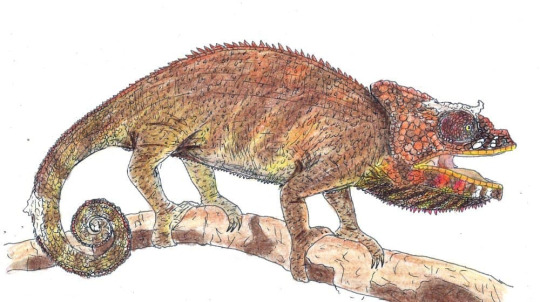
an artistic reconstruction of Caluma Benovskyi
Euthecodon
Out in the waters of BevyClan, especially in the crocodile lake, you’re likely to find yourself face-to-snout with one of the fiercest archosaurs left on the planet, the crocodile. The genus Euthecodon comprise of three species of long-snouted crocodiles, these beasts appear to have convergently evolved their signature snouts with modern-day gharials, and had originally been thought to have been an ancestor of the croc-cousins, though research has more heavily suggested that BevyClan is indeed home to true crocodiles.

photo taken at a zoo in the Netherlands, of the Euthecodon’s closest living relative, Mecistops
Alongside these fun fossil creatures, sabers in the baobab clans have found some unique collectibles today, be it strange bugs in tree-sap in SunClan's fallen trees, ridged shells in the cub islands of BevyClan, or odd reptilian teeth in TuskClan's sand dunes! Maybe doing a bit of research could help our sabers understand what the world was like before they were in it, and what the Baobab region looked like many moons ago....
Sources and fun extra reads!
Black, Riley. “An Extinct “Anchor-Tusked” Proboscidean.” Science, 24 July 2009, www.nationalgeographic.com/science/article/an-extinct-anchor-tusked-proboscidean.
“Calumma Benovskyi, a New Fossil Chameleon from Kenya.” Www.chameleons.info, www.chameleons.info/l/calumma-benovskyi-a-new-fossil-chameleon-from-kenya/. Accessed 11 Oct. 2023.
Čerňanský, Andrej, et al. “The Only Complete Articulated Early Miocene Chameleon Skull (Rusinga Island, Kenya) Suggests an African Origin for Madagascar’s Endemic Chameleons.” Scientific Reports, vol. 10, no. 1, 10 Jan. 2020, p. 109, www.nature.com/articles/s41598-019-57014-5, https://doi.org/10.1038/s41598-019-57014-5.
commondescentpc. “Episode 66 – Elephants.” The Common Descent Podcast, 28 July 2019, commondescentpodcast.com/2019/07/27/episode-66-elephants/. Accessed 11 Oct. 2023.
“Euthecodon.” Wikipedia, 17 Mar. 2023, en.wikipedia.org/wiki/Euthecodon. Accessed 11 Oct. 2023.
Hitchcock, Edward. Elementary Geology: By Edward Hitchcock. Google Books, M. H. Newman & Company, 1847, books.google.com/books?id=dZiyAAAAIAAJ&pg=PA154&dq=dinotherium+++bank+++anchor&ei=-bFpSu_sCJKOyASrnpWgBA#v=onepage&q&f=false. Accessed 11 Oct. 2023.
“National Fossil Day (U.S. National Park Service).” Www.nps.gov, www.nps.gov/subjects/fossilday/index.htm. Accessed 11 Oct. 2023.
#discord warrior cat rp#discord warrior cat roleplay#discord wcrp#discord rp#warrior cats#sabertooth tiger#clansbeforetime#wcrp#clans before time#sabertooth cat#chameleon#crocodile#elephant#fossil#national fossil day#national fossil day 2023#fossil teeth#fossil shells#fossil in amber
6 notes
·
View notes
Note
What about megafauna reptiles in the au, like Meiolania, Euthecodon, megalania, and Quinkana? I was thinking sebecids, but 12 million years is probably too long.
I kind of want to limit it just to dinosaurs, as the original movie was
6 notes
·
View notes
Photo


Friend introduced me to Live a live. I do what I do best.
Zaki’s based on euthecodon genus, beru on dinopithecus, pogo’s just a lil monkey dude.
gori is a stock photo of a businessman
(Sorry for the re-post, but it wasnt showing up in the tag!)
#live a live#live a live fanart#live a live beru#live a live pogo#live a live zaki#live a live prehistory#anthro#sfw furry#sfw scalie#funny animals
20 notes
·
View notes
Photo

Scale diagram of crocodyliforms 10 metres (33 ft) or more in length, based on recent size estimates.
Sarcosuchus imperator: body length of 11-12 m according to Sereno et al. (2001), early Cretaceous
Deinosuchus riograndensis: body length of 10.6 m according to Farlow et al. (2005), skull shape according to Schwimmer (2002), late Cretaceous
Purussaurus brasiliensis: body length of 10.3 m according to Moreno-Bernal (2007), skull shape according to Aguilera (2006), Miocene , 8 mya
Gryposuchus croizati: body length of 10.15 m and skull shape according to Riff & Aguilera (2008), middle Miocene
Euthecodon brumpti: body length of ~10 m and skull shape according to Storrs (2003), Early Miocene to Early Pleistocene
Saltwater Crocodile (Crocodylus porosus): measuring 6.32 meters according to Wood (1983), extant - Miocene to present
image by Smokeybjb | Wikimedia
#illustration#crocodilian#crocodile#crocodyliform#reptile#evolution#herpetology#prehistoric#animals#nature#science
46 notes
·
View notes